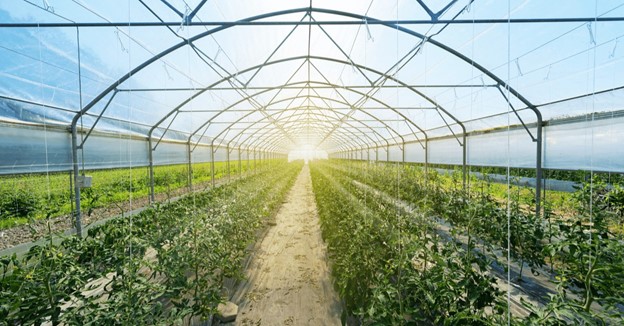Solar Energy
for Greenhouses
Energy represents 15% of total costs in greenhouses, making it the 3rd largest expense after labor and plant materials. The typical energy budget of a greenhouse is broken down as follows:
- Space heating represents 70-80%
- General electricity consumption represents 10-15%
- Transportation accounts for the rest of energy consumption
An energy efficient greenhouse depends on two main elements: an efficient heating system, and a high-performance envelope. The operating costs and environmental footprint can be further reduced with solar trackers and battery systems to provide clean energy 24/7 for operations. According to the University of Connecticut, many greenhouse improvements can achieve a payback period of less than two years.
Since heating is the largest energy expense in a greenhouse, heat loss prevention is key for energy efficiency. There are four main ways in which a greenhouse can lose heat: conduction, convection, radiation and infiltration.

The following are some of the energy efficiency measures that have been analyzed by the University of Wisconsin:
| Greenhouse Energy Efficiency Measure | Typical Savings |
| Infrared and anti-condensation treated films | 15-20% |
| Insulated side walls | 558 therms of natural gas per year, for a 28ftx100ft greenhouse |
| Night curtains | 20% to 70% when closed |
| Air sealing | 3-10% of heating costs in a typical greenhouse |
| Double polyethylene cover for glass greenhouse | Up to 50% heat loss reduction |
| Windbreaks | 5-10% heat loss reduction |
The glazing material used is a very important decision when building a greenhouse. Single-pane glass has a service life of over 25 years, but the structure is expensive, and its typical heat loss is 1.1 BTU/sf-hr.-°F (BTUs per square feet, per hour, per °F of temperature difference). On the other hand, double polyethylene film only loses 0.5-0.7 BTU/sf-hr.-°F while having a lower installation cost, but the typical service life is only 3-4 years.
Wind breaks are also important since heat loss doubles with 15 mph wind. One option is shielding the greenhouse with 4 or 5 rows of trees, mixing coniferous and deciduous species or consider installation of dual axis solar trackers.
